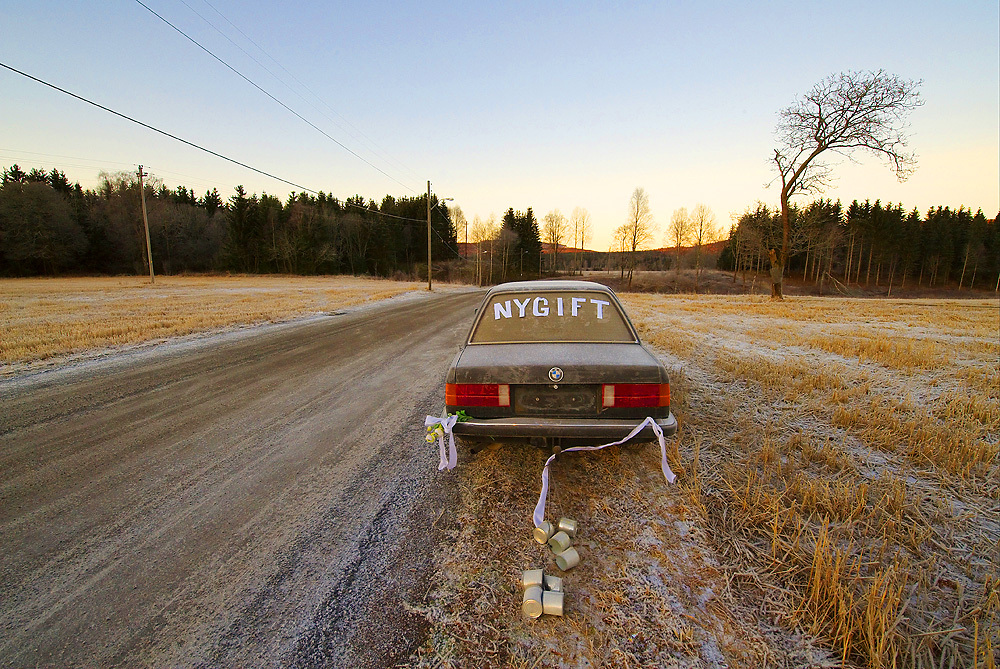| Nikon D3 Digital Camera Reviewed |
|
|
| by Bjørn
Rørslett |
|
10.
Summing Up
While most people might
consider the "full-sized" FX sensor the biggest news
with the Nikon D3, I for one am not that much preoccupied with
the FX format on its own. The size factor isn't that decisively
great between DX and FX if you have worked with 35mm and
4x5" cameras anyway. The FX/DX systems see a lot of overlap
in their targeted applications. Much more important to me is the
concerted and integrated efforts by Nikon to come up with a truly
professional camera system. They have added a perplexing
diversity of cutting-edge and exciting features to their
top-of-the-line model and laid the foundation for a growing line
of competent offerings to the professional and keen amateur
communities. Yet, at the same time, Nikon has added momentum to
their DX line as well by introducing the D300. So you, the end
user, can enjoy the best of both worlds.
During the months I've spent
with the D3 and shot it against my D2X and the D300, I've gotten
far better insights into the strong and weak points of either
format. What you can do with DX can largely also be done with FX.
Sometimes the one, sometimes the other format will have the upper
hand. Until Nikon comes up with a higher-resolving FX camera to
team up as a companion to the D3, the DX system has the edge in
sheer basic resolution. As always this has a flip side with it so
while a D2X or D300 outresolves a D3, you either get more image
graininess("noise"), or a more restricted coverage from
the same vantage point of the camera. If you on the other hand
set up the systems so as to provide the same field of view from a
given distance, the DX format is given the bad cards because it
will have lower detail magnification and thus need the bigger
secondary magnification, both of which aspects will potentially
adversely impact the final outcome. As always, the underlying
factors will determine what you end up with and as a
photographer, you have to learn how to play the game to your own
advantage.
The ability to shoot under
adverse light situations without resorting to the use of a
mood-killing flash is perhaps one of the most important
characteristics of the D3 concept. As such, it is bound to
influence the approaches we follow in our day-to-day handling of
photography challenges. Will this also constitute a true paradigm
shifting contemporary photography? It's early days yet so I
wouldn't draw the definite conclusion on this issue just now. But
it might well be the case.
So, does the arrival of FX
make the smaller DX suddenly obsolete? In an earlier review, I
gave the D2X a healthy recommendation as being the flagship of
the Nikon DLSRs at that time. Now, nearly three years later, the
D2X continues to deliver excellent image quality provided you
pair it with top-performing glass. As far as DX is concerned, the
D300 continues where the D2X bites the dust in terms of noise
performance So these two combine quite nicely. With the D3, I
haven't yet decided whether an FX/DX combination is the most
appropriate for me as the basic workhorse setup. Two D3 cameras
alone will not be optimal for me, but D3 + D300, or D3 + D2X
might be. I need to use these combinations over a longer period
of time to finally arrive at a decision. Besides, I will continue
to use DX-based systems for specialised applications such as UV
and IR photography, no matter what system combination I'll end up
with. This is because the D3, as expected, is practically useless
for thee beyond-the-visible kind of applications.
On the horizon one can predict
with some degree of certainty there will be a stablemate to the
D3 with an elevated pixel count for those admittedly few
occasions in which the current D3 won't cut it. When such a
camera arrives, I'll add it to my D3 outfit to complete the
"FX" kit.
For me the arrival of the D3
is the final nail in the coffin for "35mm"
silver-halide reflex cameras. Of that I'm certain. In
terms of pure resolving power, I'll continue to make the most out
of my DX camera while I'm awaiting a higher-resolving FX model
from Nikon. Film is no longer a viable option in this respect,
unless you step up to a large-format view camera. But such a
system is not suited for my approach to photography.
 |
Just Married, Just Ditched
Nikon D3,
AFS-Nikkor 14-24 mm f/2.8 lens, 1/15 sec at f/8, 1600
ISO, hand-held shot (in-camera jpg)
© Bjørn
Rørslett/NN
|
At last, getting that super-wide sweep to
the grand vistas again with the Nikon D3 and the new AFS
14-24 mm f/2.8 Nikkor. The future looks indeed bright for
Nikon with their D3
(A little crash
course in Norwegian: "Nygift" = Just married)
|
Acknowledgements:
My sincere thanks to all
of you providing me with feedback and information about my
numerous typing errors. These errors are dealt with as soon as
possible.
